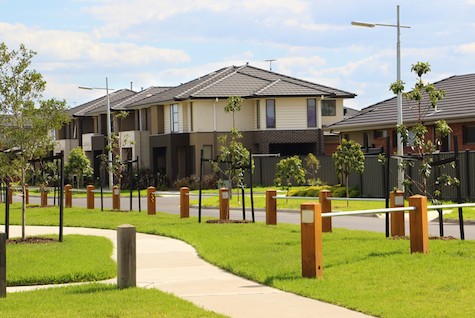Fax: 07 5452 7301
Email: nathan@ffsolutions.com.au
Latest News
Investing for a house deposit Despite it seeming increasingly difficult to get on the property ladder, there are still a few ways younger investors can realistically work towards a house deposit.
The surge in house prices around Australia over the last two years has done little to quell the notion that getting on the property ladder is an increasingly difficult feat, particularly for younger investors. While higher interest rates expected this year may lead to less demand and a fall in house prices, property buyers are still battling other economic factors such as lower equity returns, rising inflation and an ever-volatile market. Yet, even when conditions may seem unfavourable, there are still a few ways younger investors can work towards a house deposit if that's one of their goals.
Set a target and have a plan A house deposit is usually 20 per cent of the purchase price of the property. So, if the house or apartment you are considering is around $700,000, then you will need $140,000 upfront. You also need to consider other costs such as stamp duty, legal costs and admin fees, which all vary depending on which state you are in and whether you are buying a first home. Doing your research on what government grants and concessions you are eligible for is also essential when creating your investment plan. Initiatives such as the First Home Owner Grant, the First Home Super Saver Scheme and First Home Loan Despite Scheme may help reduce the amount needed for a first deposit. For example, in Victoria, first home buyers receive a stamp duty exemption on properties valued up to $600,000 or a concession on properties valued between $600,001 and $750,000. Once you've got a figure in mind and decided on a timeline, you can then work backwards to understand how much you need to periodically save to reach your goal. This can be a combination of regularly contributing to a savings account, spending less, and investing an amount that you are comfortable with.
Consider your risk-return profile and how it will evolve One of the biggest advantages younger investors have is that time is on their side. This means if investors start early, they have a longer time frame to achieve their goals and therefore the option to take on more risk. This is because market volatility smooths out in the long-run as more time to invest means there's more time to recover should there be a market downturn. As such, investing in high growth securities such as equity ETFs or funds could be a suitable place to start. At the same time however, it's important to maintain enough diversification so that your portfolio is not wholly dependent on the performance of one asset class or sector. Diversified high growth ETFs and funds invest mainly in growth assets but still allocate a portion to income assets such as bonds or cash – a portfolio stabiliser in times of volatility. While taking on more risk at the beginning of your investment journey may suit, particularly if you have a mid to longer term time frame, investors should also consider how their risk tolerance will evolve as their timeline grows shorter and as they approach their goal. You should be keenly aware that investing for a house deposit is different to investing for retirement – the time horizons for both scenarios are vastly different and as such, your risk profile and corresponding asset allocations would be different for each goal. It might be more prudent when being five or less years away from achieving your target deposit to think about a gradual shift away from high-risk, high-growth investments towards a more conservative exposure, just in case there is a significant market downturn that may delay progress when you're so close to your end goal.
Automate your regular investments Regular investing is the best way to achieve an ambitious financial goal without feeling daunted by the task ahead. Not only will your investments continue to compound as you contribute, you can also easily adopt the dollar-cost averaging strategy which ultimately lowers your average investment costs over time and lets you keep more of your returns. Automating your investments will also make regular investing much easier and encourage a disciplined approach. As mentioned above, when you approach your end goal, you can gradually redirect your automated contributions towards less-risky investments as you feel appropriate.
Vanguard 15 Mar, 2022 vanguard.com.au |

